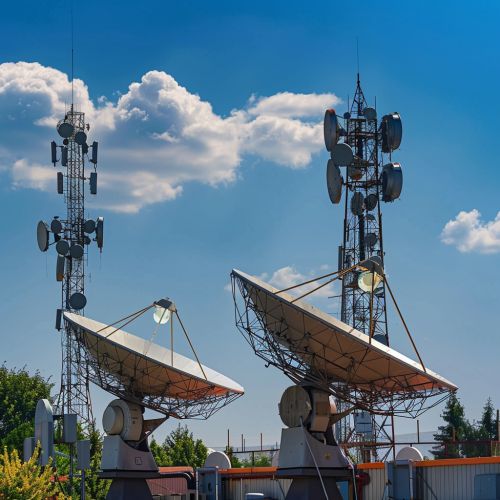ITU-T: Difference between revisions
(Created page with "== Overview == The International Telecommunication Union Telecommunication Standardization Sector (ITU-T) is one of the three sectors of the International Telecommunication Union (ITU), a specialized agency of the United Nations responsible for issues that concern information and communication technologies. ITU-T coordinates standards for telecommunications and Information Communication Technology (ICT) on an international scale. The sector was created in 1956 as the In...") |
No edit summary |
||
| (One intermediate revision by the same user not shown) | |||
| Line 23: | Line 23: | ||
The standardization process within ITU-T is collaborative and consensus-driven. It involves multiple stages, including proposal, study, and approval. Recommendations, as the standards are known, are developed through rigorous technical discussions and are subject to approval by member states. These recommendations are crucial for ensuring interoperability and compatibility across global telecommunication networks. | The standardization process within ITU-T is collaborative and consensus-driven. It involves multiple stages, including proposal, study, and approval. Recommendations, as the standards are known, are developed through rigorous technical discussions and are subject to approval by member states. These recommendations are crucial for ensuring interoperability and compatibility across global telecommunication networks. | ||
[[Image:Detail-92381.jpg|thumb|center|Modern telecommunication infrastructure with satellite dishes and communication towers.|class=only_on_mobile]] | |||
[[Image:Detail-92382.jpg|thumb|center|Modern telecommunication infrastructure with satellite dishes and communication towers.|class=only_on_desktop]] | |||
== Key Contributions == | == Key Contributions == | ||
Latest revision as of 23:43, 14 June 2024
Overview
The International Telecommunication Union Telecommunication Standardization Sector (ITU-T) is one of the three sectors of the International Telecommunication Union (ITU), a specialized agency of the United Nations responsible for issues that concern information and communication technologies. ITU-T coordinates standards for telecommunications and Information Communication Technology (ICT) on an international scale. The sector was created in 1956 as the International Telegraph and Telephone Consultative Committee (CCITT), and it was renamed ITU-T in 1993.
History
Formation and Early Years
The origins of ITU-T can be traced back to the establishment of the International Telegraph Union in 1865. The organization was formed to standardize telegraphy and facilitate international communication. The International Telegraph Union later became the International Telecommunication Union in 1932, reflecting the broader scope of its work. The ITU-T itself was established in 1956, initially focusing on standardizing telegraph and telephone services.
Evolution and Modernization
Over the decades, ITU-T has evolved to address the rapid advancements in telecommunications and ICT. The sector has expanded its scope to include a wide range of technologies, from traditional telephony to modern internet protocols and cybersecurity standards. The renaming of CCITT to ITU-T in 1993 marked a significant shift towards a more inclusive approach to telecommunication standardization.
Structure and Functioning
Organizational Structure
ITU-T operates under the authority of the World Telecommunication Standardization Assembly (WTSA), which meets every four years to define the sector's strategic direction. The ITU-T Study Groups, composed of experts from member states and industry, are responsible for developing standards. These groups cover various areas, including network architecture, cybersecurity, and multimedia services.
Standardization Process
The standardization process within ITU-T is collaborative and consensus-driven. It involves multiple stages, including proposal, study, and approval. Recommendations, as the standards are known, are developed through rigorous technical discussions and are subject to approval by member states. These recommendations are crucial for ensuring interoperability and compatibility across global telecommunication networks.


Key Contributions
Telecommunication Standards
ITU-T has been instrumental in developing numerous telecommunication standards that have shaped the industry. Notable examples include the G. series recommendations for audio and video compression, the X. series for data communication networks, and the H. series for multimedia communication systems. These standards have enabled seamless communication across different devices and networks.
Internet Protocols and Cybersecurity
In recent years, ITU-T has played a significant role in the development of internet protocols and cybersecurity standards. The sector's work on the Internet Protocol version 6 (IPv6) and the Domain Name System (DNS) has been critical in addressing the challenges of internet scalability and security. ITU-T's cybersecurity standards provide guidelines for protecting telecommunication infrastructure from cyber threats.
Impact and Challenges
Global Impact
The standards developed by ITU-T have a profound impact on global telecommunications. They ensure that devices and networks from different manufacturers and countries can work together seamlessly. This interoperability is essential for the global economy, enabling international trade, communication, and cooperation.
Challenges and Criticisms
Despite its successes, ITU-T faces several challenges. The rapid pace of technological advancement often outstrips the standardization process, leading to delays in the adoption of new technologies. Additionally, the consensus-driven approach can sometimes result in compromises that dilute the effectiveness of standards. ITU-T has also faced criticism for its perceived lack of transparency and inclusiveness in the standardization process.
Future Directions
Emerging Technologies
As the telecommunication landscape continues to evolve, ITU-T is focusing on emerging technologies such as 5G, the Internet of Things (IoT), and artificial intelligence (AI). The sector is working on developing standards that will support the deployment and integration of these technologies, ensuring they can be adopted globally in a secure and interoperable manner.
Sustainability and Inclusivity
ITU-T is also prioritizing sustainability and inclusivity in its future work. The sector is developing standards that promote energy efficiency and reduce the environmental impact of telecommunication infrastructure. Additionally, ITU-T is striving to include a broader range of stakeholders in the standardization process, ensuring that the needs of developing countries and marginalized communities are considered.
